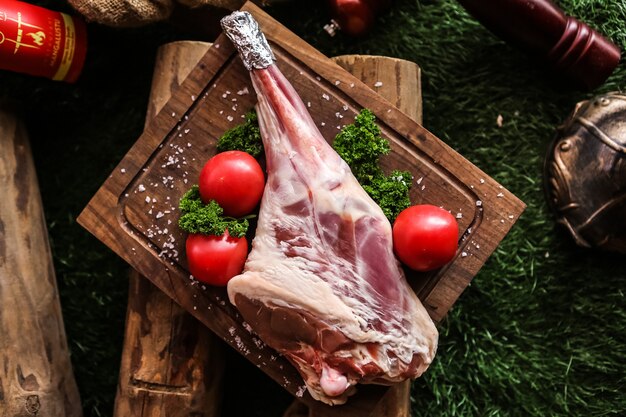
Diet plays a significant role in our overall health, and there’s an ongoing discussion about the potential relationship between certain foods and the risk of cancer. Among these foods, red meats like lamb have received considerable attention. While lamb offers essential nutrients like protein, vitamins, and minerals, its high saturated fat and cholesterol content is primarily associated with an increased risk of certain cancers. In this blog, we’ll explore the potential risks and benefits of lamb consumption and provide tips for balancing lamb in your diet to minimize cancer risk.
The Potential Risks of Lamb Consumption:
- Saturated Fat: Lamb is known for its higher saturated fat content compared to other meats like chicken or fish. An increased risk of heart disease and some types of cancer is associated with diets high in saturated fat.
- Cholesterol: Elevated blood cholesterol levels are associated with a higher risk of heart disease. Lamb contains higher cholesterol levels compared to leaner meats.
- Heterocyclic Amines (HCAs) and Polycyclic Aromatic Hydrocarbons (PAHs): Cooking meat, including lamb, at high temperatures produces HCAs and PAHs. These compounds have been studied for their potential carcinogenic (cancer-causing) effects.
The Benefits of Lamb Consumption:
- Nutrient Density: Lamb provides essential nutrients like protein, iron, zinc, and B vitamins, including vitamin B12. These nutrients are important for overall health and well-being.
- Complete Protein: Lamb provides a high-quality source of complete protein, which is essential for tissue repair and immune function.
Tips for Balancing Lamb in Your Diet:
- Moderation is Key: Enjoying lamb in moderation can help reduce potential risks. Consider limiting red meat consumption, including lamb, to a few servings per week.
- Lean Cuts: Opt for lean cuts of lamb and trim visible fat before cooking. Lean cuts generally contain less saturated fat.
- Balanced Diet: Maintain a well-balanced diet by including a variety of foods such as fruits, vegetables, whole grains, and lean proteins. A diet rich in plant-based foods and lean proteins may help reduce cancer risk.
- Cooking Methods: Choose healthier cooking methods like grilling, baking, broiling, or slow cooking, as these methods produce fewer HCAs and PAHs compared to frying or grilling over an open flame.
- Marinades: Marinating lamb with herbs, spices, and acidic ingredients (like vinegar or citrus juice) before cooking can help reduce the formation of harmful compounds during the cooking process.
- Diversify Protein Sources: Explore other protein sources like poultry, fish, legumes, and plant-based proteins to reduce your reliance on red meats.
- Regular Exercise: Incorporating regular physical activity into your routine can help lower cancer risk and improve overall health.
- Consult a Dietitian: If you have specific dietary concerns or health conditions, consider consulting a registered dietitian. They can provide personalized guidance on your diet, including recommendations on lamb consumption.
Conclusion:
Balancing lamb in your diet is about making informed choices and being mindful of the potential risks and benefits. To maintain a healthy diet, consume lamb in moderation, opt for lean cuts, and diversify your protein sources to minimize cancer risk. Maintaining a balanced diet and an overall healthy lifestyle are essential steps in promoting your well-being and reducing the risk of cancer and other chronic diseases.